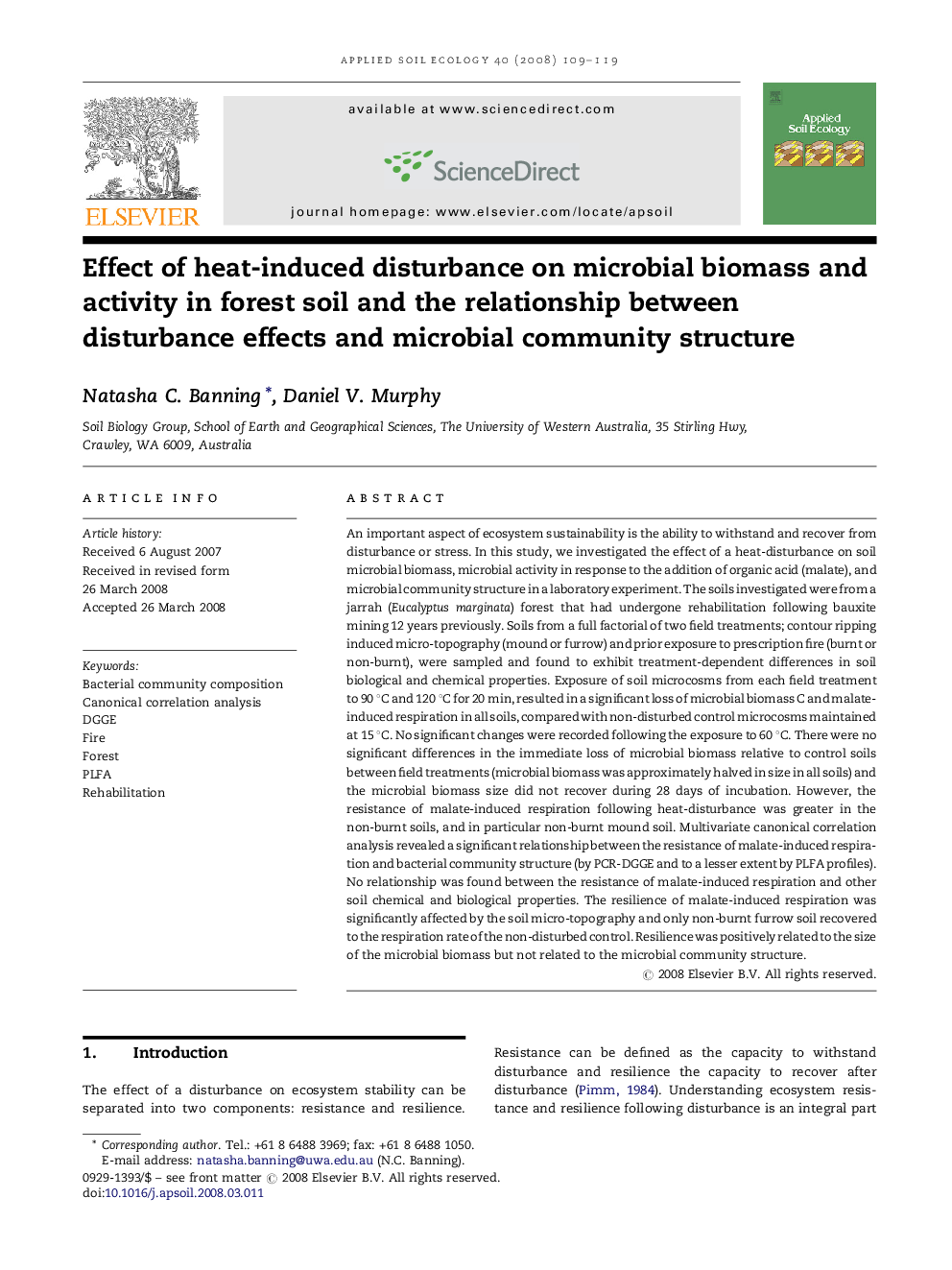| کد مقاله | کد نشریه | سال انتشار | مقاله انگلیسی | نسخه تمام متن |
|---|---|---|---|---|
| 4383158 | 1304251 | 2008 | 11 صفحه PDF | دانلود رایگان |

An important aspect of ecosystem sustainability is the ability to withstand and recover from disturbance or stress. In this study, we investigated the effect of a heat-disturbance on soil microbial biomass, microbial activity in response to the addition of organic acid (malate), and microbial community structure in a laboratory experiment. The soils investigated were from a jarrah (Eucalyptus marginata) forest that had undergone rehabilitation following bauxite mining 12 years previously. Soils from a full factorial of two field treatments; contour ripping induced micro-topography (mound or furrow) and prior exposure to prescription fire (burnt or non-burnt), were sampled and found to exhibit treatment-dependent differences in soil biological and chemical properties. Exposure of soil microcosms from each field treatment to 90 °C and 120 °C for 20 min, resulted in a significant loss of microbial biomass C and malate-induced respiration in all soils, compared with non-disturbed control microcosms maintained at 15 °C. No significant changes were recorded following the exposure to 60 °C. There were no significant differences in the immediate loss of microbial biomass relative to control soils between field treatments (microbial biomass was approximately halved in size in all soils) and the microbial biomass size did not recover during 28 days of incubation. However, the resistance of malate-induced respiration following heat-disturbance was greater in the non-burnt soils, and in particular non-burnt mound soil. Multivariate canonical correlation analysis revealed a significant relationship between the resistance of malate-induced respiration and bacterial community structure (by PCR-DGGE and to a lesser extent by PLFA profiles). No relationship was found between the resistance of malate-induced respiration and other soil chemical and biological properties. The resilience of malate-induced respiration was significantly affected by the soil micro-topography and only non-burnt furrow soil recovered to the respiration rate of the non-disturbed control. Resilience was positively related to the size of the microbial biomass but not related to the microbial community structure.
Journal: Applied Soil Ecology - Volume 40, Issue 1, September 2008, Pages 109–119